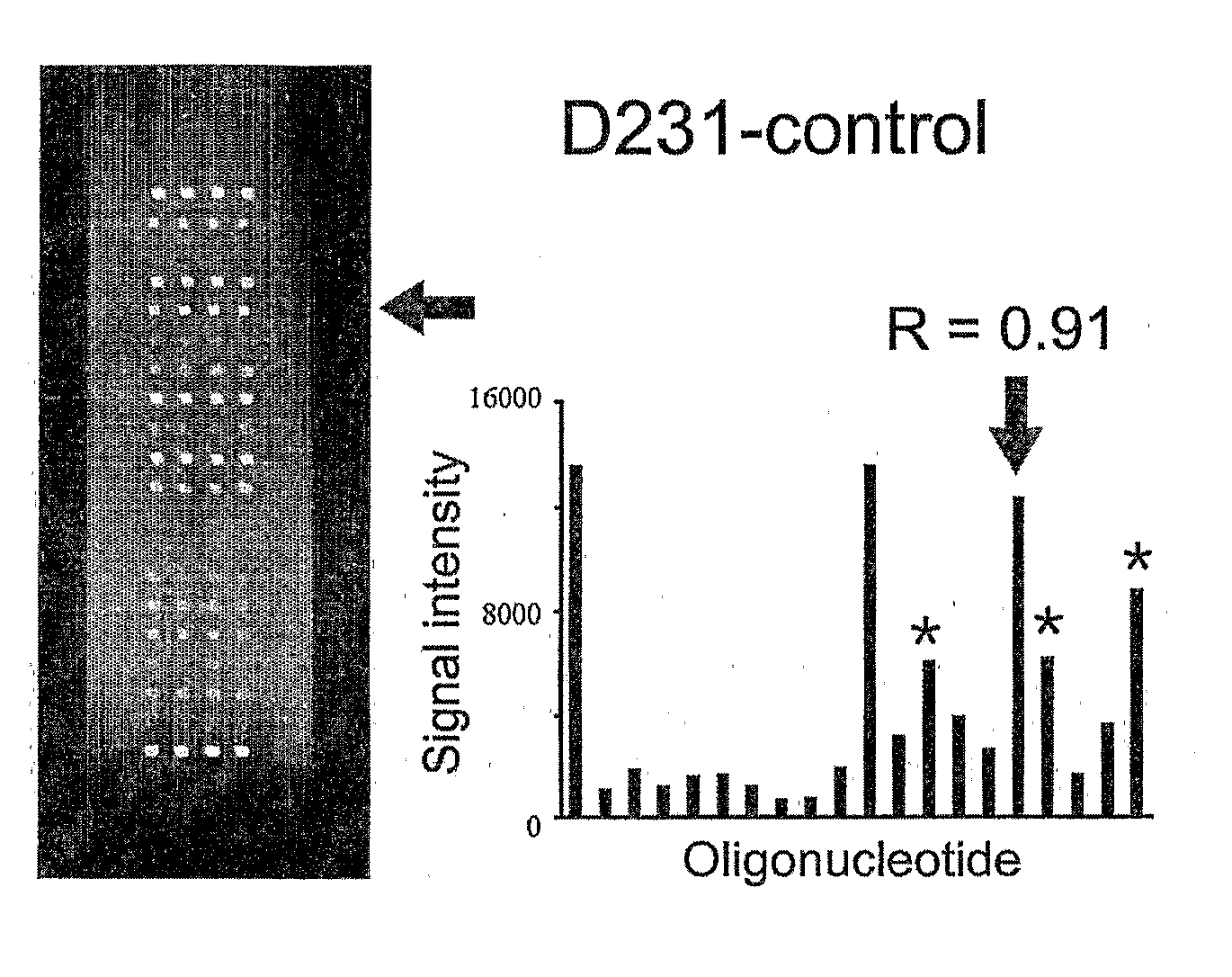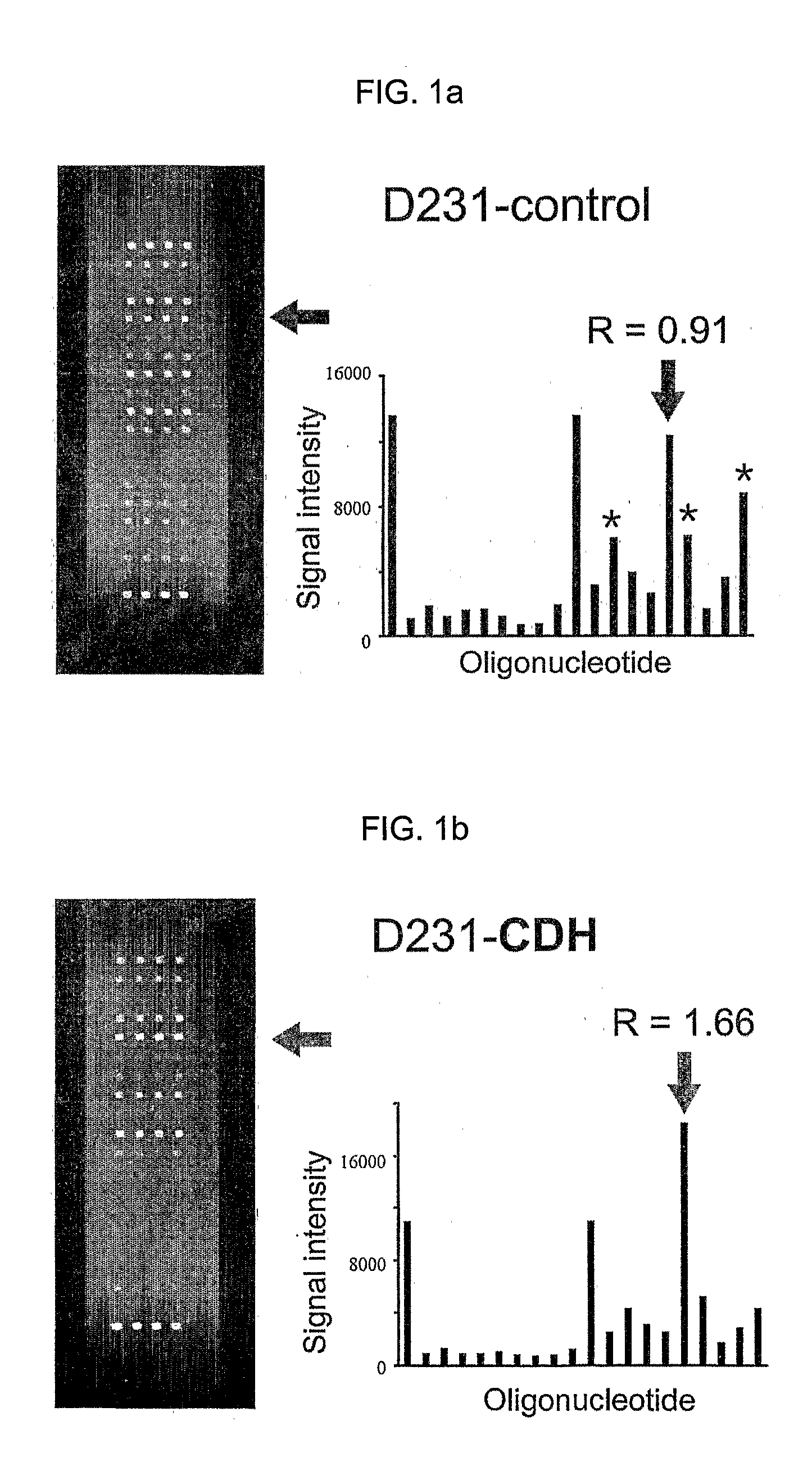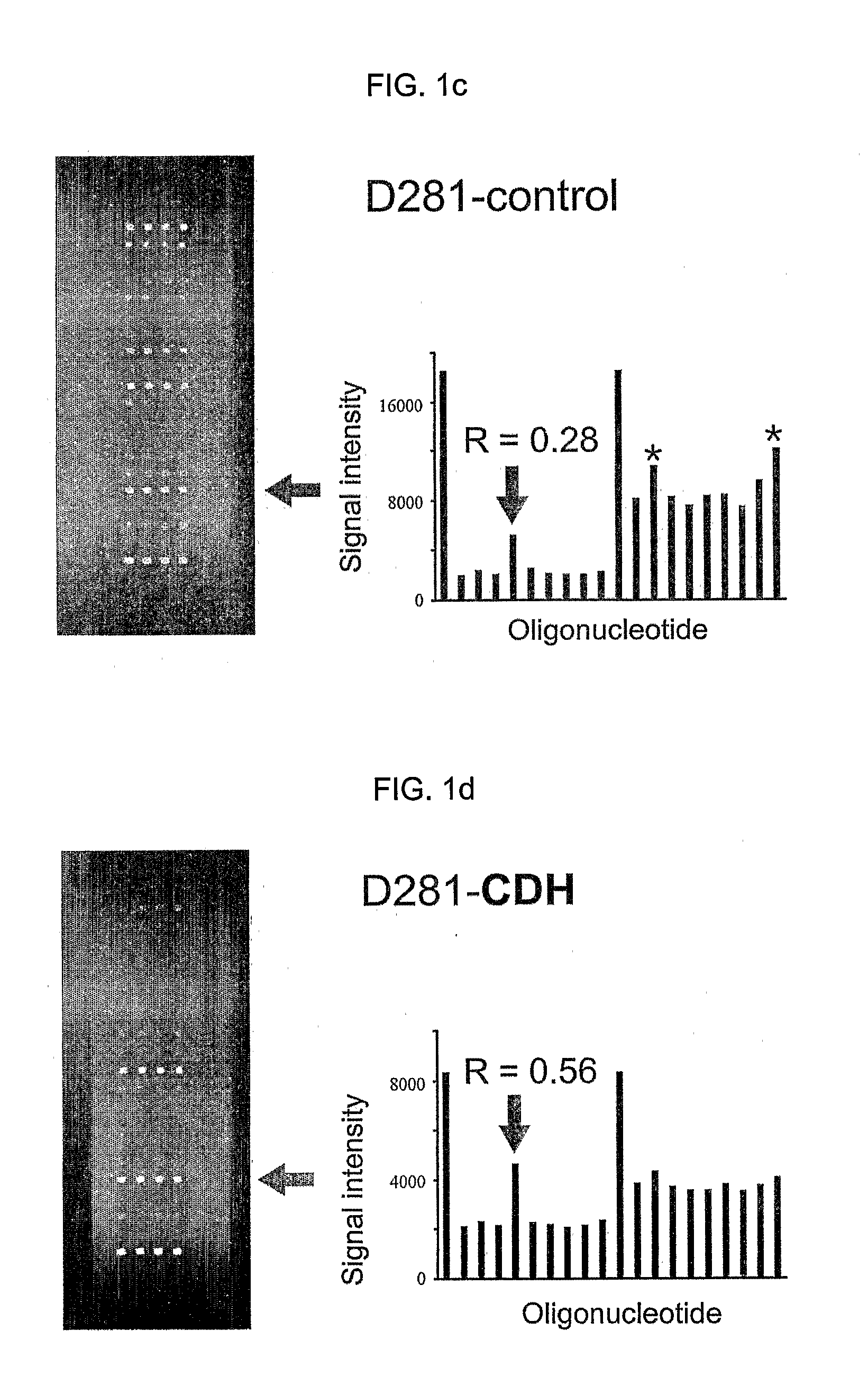K-Ras Oligonucleotide Microarray and Method for Detecting K-Ras Mutations Employing the Same
a technology of oligonucleotide microarray and kras, which is applied in the field of kras oligonucleotide microarray and the same, can solve the problems of not being able to accurately and cost-effectively evaluate large samples, and achieve the effect of fast and reliable genetic diagnostics
- Summary
- Abstract
- Description
- Claims
- Application Information
AI Technical Summary
Benefits of technology
Problems solved by technology
Method used
Image
Examples
example 1
Manufacture of K-ras Oligonucleotide Microarray
[0053] Eighteen oligonucleotides were designed to cover all possible substitutions at the two mutational hot spot codons of K-ras gene (codon 11 and 12), and two oligonucleotide for the wild-type. All oligonucleotides were 21 base pair and each mismatch sequence was located in the middle of oligonucleotides, as shown in Table 1. Oligonucleotides having missense mutation at one of the hot spot codons are: the oligonucleotides described in SEQ ID NOs. 2 to 10, at codon 12; and the oligonucleotides described in SEQ ID NOs. 12 to 20, at codon 13. The oligonucleotides described in SEQ ID NOs. 1 and 11 are wild types.
TABLE 1SEQ ID NO.OligonucleotideSequence (5′→3′)112WaGTTGGAGCTGGTGGCGTAGGC212Mb1AGTTGGAGCTTGTGGCGTAGG312M2AGTTGGAGCTAGTGGCGTAGG412M3AGTTGGAGCTCGTGGCGTAGG512M4GTTGGAGCTGATGGCGTAGGC612M5GTTGGAGCTGCTGGCGTAGGC712M6GTTGGAGCTGTTGGCGTAGGC812M7TTGGAGCTGGAGGCGTAGGCA912M8TTGGAGCTGGGGGCGTAGGCA1012M9TTGGAGCTGGCGGCGTAGGCA1113WGGAGCTGGTGGCG...
example 2
Examination of K-ras Mutation using K-ras Oligonucleotide Microarray
(Step 1) Preparation of DNA sample
[0057] A total of 204 colorectal cancer patients from Seoul National University Hospital and National Cancer Center of Korea were investigated for the presence of somatic K-ras mutation. Written informed consents were obtained from all patients. Of the 204 colorectal cancers, 103 were from the proximal colon (cecum to splenic flexure) and 101 were from the distal colorectum (splenic flexure to rectum). Further, a normal tissue of colorectal cancer patient was used as a negative control.
[0058] Genomic DNA was extracted from frozen specimens using TRI reagent (Molecular Research Center, Cincinnati, Ohio, USA) as previously described (Kim I J, et al., Clin. Cancer Res. 9: 2920-2925, 2003). To generate a fluorescent dye-labeled DNA sample, PCR amplification was performed using the extracted DNA as a template and two pairs of primers of SEQ ID NOs. 21 and 22 (Metabion, Germany) as pr...
example 3
Confirmation of K-ras Mutations Detected by K-ras Oligonucleotide Microarray
[0068] In order to confirm K-ras mutations detected by the K-ras oligonucleotide microarray of the present invention, 205 colorectal cancer samples were subjected to bi-directional sequencing analysis as previously described (Park, J H, et al., Clin. Genet. 64: 48-53, 2003). For sequencing, previously reported primers of SEQ ID NOs: 23 and 24 were used (Lagarda H, et al., J. Pathol. 193: 193-199, 2001). PCR was performed according to the same method as described in the step (1) of Example 2, except for using a conventional dNTP mixture.
[0069] Bi-directional sequencing was performed using a Taq dideoxy terminator cycle sequencing kit and an ABI 3100 DNA sequencer (Applied Biosystems, Forster City, Calif.).
[0070] As a result, mutation results were 100% concordant with direct sequencing, showing neither false-positive nor false-negative.
[0071] While the embodiments of the subject invention have been describ...
PUM
| Property | Measurement | Unit |
|---|---|---|
| diameter | aaaaa | aaaaa |
| diameter | aaaaa | aaaaa |
| diameter | aaaaa | aaaaa |
Abstract
Description
Claims
Application Information
 Login to View More
Login to View More - R&D
- Intellectual Property
- Life Sciences
- Materials
- Tech Scout
- Unparalleled Data Quality
- Higher Quality Content
- 60% Fewer Hallucinations
Browse by: Latest US Patents, China's latest patents, Technical Efficacy Thesaurus, Application Domain, Technology Topic, Popular Technical Reports.
© 2025 PatSnap. All rights reserved.Legal|Privacy policy|Modern Slavery Act Transparency Statement|Sitemap|About US| Contact US: help@patsnap.com



